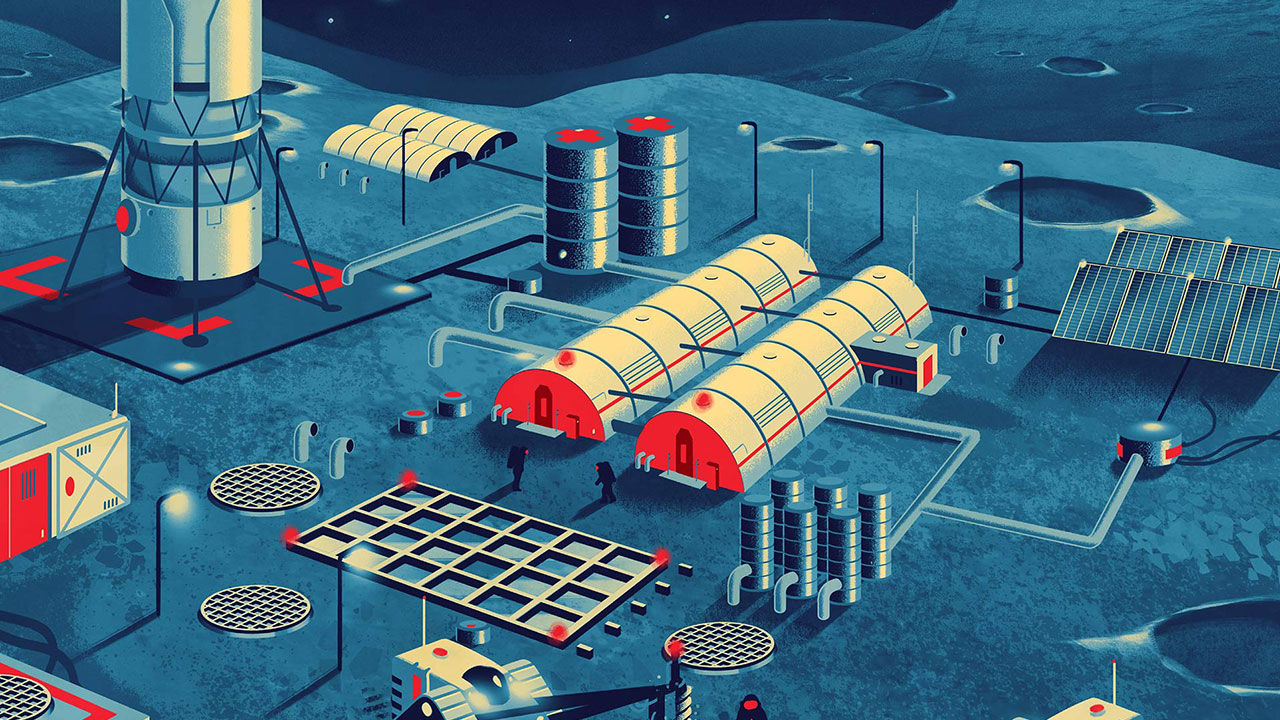Orbiting propellant depots are in development, and they could reinvent how we operate beyond Earth
In 2021, we got a glimpse of the future.
That year, Colorado-based Orbit Fab launched a new kind of object into low-earth orbit. Named Tanker-001 Tenzing, this 35 kg satellite was a fuel depot: It contained a supply of propellant made from concentrated hydrogen peroxide. The aim? To test a concept for in-space satellite refueling—and edge closer to a whole new approach to space exploration based around permanent infrastructure.
Traditionally, every satellite launched into orbit carries all of its fuel with it. The satellite uses this fuel for pointing itself in the right direction, maneuvering for maintenance and shifting orbits. And, when the propellant runs out, that’s the end of the line for the satellite—even if it is healthy in every other respect. The option of refueling that satellite, and extending its lifespan, is therefore valuable. Civil and military space agencies around the world are interested in orbital propellant depots, and a number of companies are experimenting with how this technology might work. What’s more, for the first time, new satellite designs are starting to include a refueling port as a standard option. The US government has taken note of Orbit Fab’s progress, and awarded it a USD13.3 million contract to provide hydrazine fuel for US Space Force satellites in orbit around the Earth. “The government is really driving this,” says Orbit Fab’s CEO Daniel Faber, a serial space-sector entrepreneur. Orbit Fab has raised more than USD30 million in venture capital funding; a recent study estimated that the global in-orbit refueling market will approach USD1.1 billion by 2032.

Propellant depots have potential applications well beyond satellites. They could help rocket builders take on longer missions, because fuelling up a rocket’s upper stage in space means less mass to get off the ground first. In the future, new forms of activity—such as the in-space assembly of items that are too large for a single rocket—may entail platforms and infrastructure that will also need fuel. And perhaps, one day, novel operational paradigms could emerge, where refuellable space tugs could ferry people and items between Earth-orbit and lunar-orbit.
A 2021 study put the value of a single kilogram of fuel in orbit—which could be purchased on Earth for a few dollars—at USD800,000. If sending payloads into space can now cost as little as USD1,000 per kilogram, there is a clear business case for companies to collect, store, and transfer propellant sent up from the surface of Earth. “When I saw that study, I knew we had to build this business,” says Faber. “It’s just a phenomenal opportunity.”
Orbit Fab’s ambition is to station propellant depots at a variety of orbits. To refuel, a satellite or spacecraft would dock with one of these depots, before a system the company has designed called RAFTI (Rapidly Attachable Fluid Transfer Interface) would enable propellant to move across. Although Orbit Fab likes to use the metaphor of visiting a “gas station” to describe this set-up, it’s more akin to an aircraft getting refueled in-flight. The company has a launch coming up in 2024 to demonstrate its capabilities, and the plan is to commence its US government contract in 2025.
Ultimately, the amount of fuel that can be delivered in orbit will be determined by the size of the propellant tanks, the rate at which it can be transferred, and the length of time the fuel can be stored. For hypergolic propellants like hydrazine—which spontaneously ignite when mixed with an oxidiser—storage even for years is relatively easy. For cryogenic propellants such as liquid hydrogen—which require cooling to extremely low termperatures—storage is much more challenging. Hydrogen boils at -252.9 degrees Celsius, and although space is typically very cold, when hydrogen tanks are in sunlight they can heat up rapidly, causing the hydrogen to evaporate. But since hydrogen is the most efficient propellant for moving around in space, NASA and the US Space Force both have programs working on cryogenic fuel storage and transfer.
As the space economy matures, so too may the propellant depot model. “In the near term, all of the fuel that the depots store will come from Earth,” says Faber. “But, by around 2040, I expect resources to increasingly come from the Moon and asteroids.”
The wider business ecosystem this picture implies may include activities that would provide further opportunities for companies operating fuel stations. Consider manufacturing; microgravity enables the production of unique alloys and compositions, which presents new manufacturing possibilities that space companies are already trialing. Orbital labs may also potentially need propellant. “The ability to do things in microgravity that you can't do on Earth is going to drive the economy in space to be absolutely enormous,” says Faber. “The real question is how long it takes, and what's the path to get there.”

Why ‘living off the land’ will be crucial to the dawning era of space exploration
As humanity ventures further into the solar system, harvesting resources in space for use off-world will be essential

Satellites can now show businesses what the human eye can’t see
Dark? Cloudy? Snowy? ‘Synthetic aperture radar’ satellites can peer through it all, and this new sector is booming

Are space-based solar farms the future of clean energy?
The idea is enjoying more attention than ever—but there are major challenges to overcome

Space junk is a huge problem. It’s also a business opportunity
The more we do up there, the more we have to clean up after ourselves. But how?


